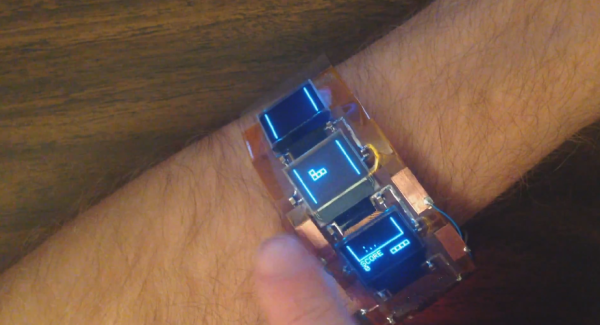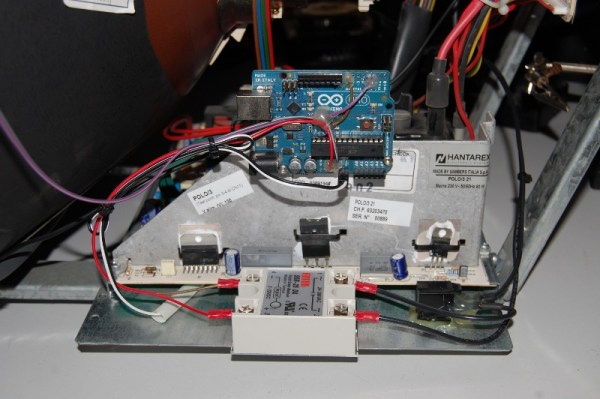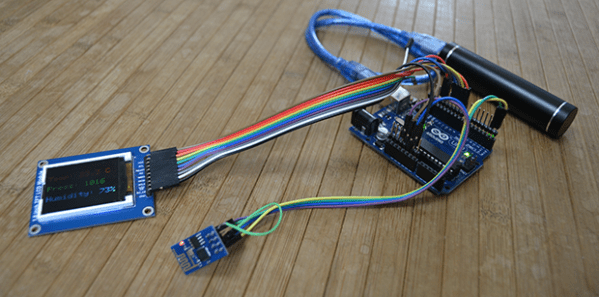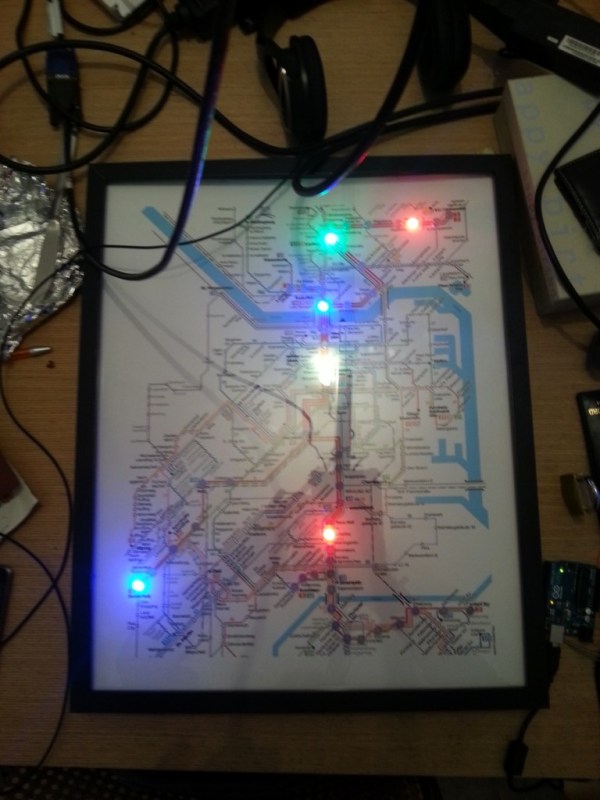Making your own Tetris game is almost a rite of passage for hackers — [Kevin] has stepped up the game a little by making this awesome-flexible-triple-displayed-Tetris-watch dubbed the Ardubracelet.
At the recent Maker Faire SF our head editor [Mike] got a chance to meet with [Kevin] from Arduboy who told us about some of his upcoming projects — this wearable was one of them!
It features three super bright OLED screens on a flexible circuit board with conductive touch buttons to continue with the minimalist design. Instead of a wrist strap he’s actually made the ends magnetic to hold it in place — did we mention the battery also lasts for over 10 hours?
At the heart of the flexible circuit board is an Atmega328p, which is the same chip used in the Arduboy (a credit card sized GameBoy). This is just the first prototype but he’s planning on making it even better in the future complete with Bluetooth and some 3D printed parts to make it look a bit nicer.
Continue reading “Ardubracelet Lets You Play Tetris On Your Wrist!”

















